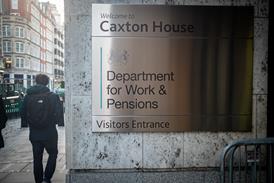A service from DG Publishing
The science behind DC redesign
DC Investment Quarterly: The introduction of freedom and choice and the charge cap this year marked two profound changes to the defined contribution marketplace, affecting both what DC investment products will be expected to deliver and the limits within which they have to deliver them.
Register now for FREE to read this article
If you are already a registered you can SIGN IN now
Register today for free!
It’s quick and easy, and as a registered user you’ll have full access to all Pension Expert articles. You will also be able to recieve editorial emails.
- Full access to all news, analysis and expert comment
- The latest industry insights delivered to your inbox on a Tuesday and Thursday morning
- The Friday Takeaway newsletter reviewing the major events of the week
- Bookmark your favourite articles for easy review
- Hear about and register to attend Pensions Expert and DG Publishing events






